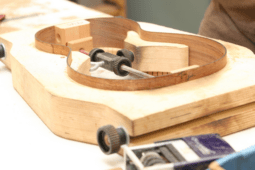Mastering Tree Cutting: General DIY Guide
There are few more iconic images of American free spirit and independence than chopping down a towering tree. The Paul Bunyan legend lives on with many of us.
Another image comes to mind when viewing social media. There are hundreds, maybe thousands of videos from all over the planet showing what can happen when you cut a tree down and don’t properly plan for where it is going to fall.
Plan Before You Cut a Tree
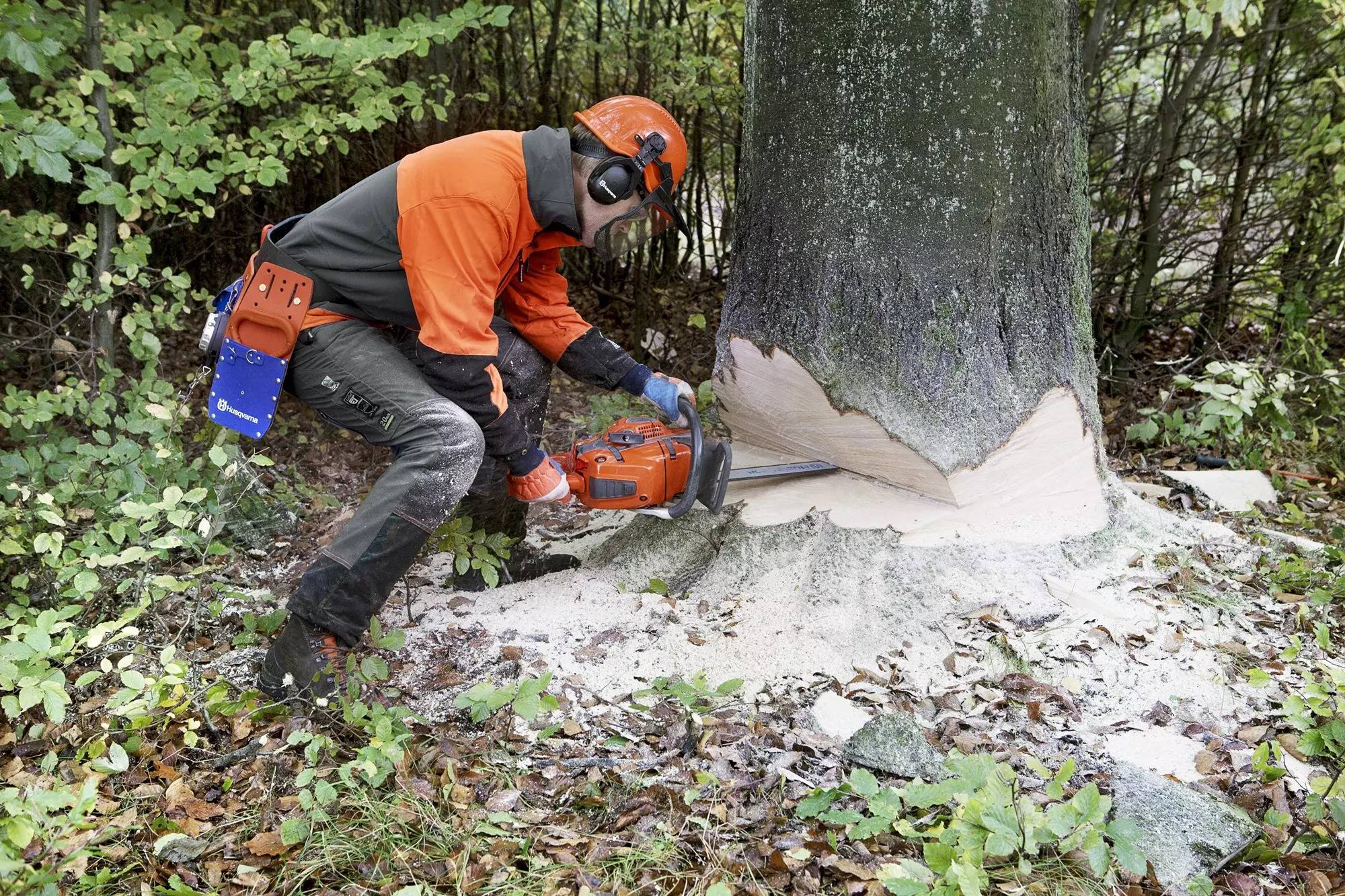
Here are a few steps that you can follow so a video of you with a chainsaw or an ax doesn’t go viral.
The first step in felling a tree is to visually examine the entire area. Not just where the buildings or vehicles may be but overhead power lines, fences, other trees, and the tree in question itself.
Look at the tree and ask yourself, is it solid? Are there any obvious signs of damage? A tree with a rotten spot can spin away as it falls in unexpected directions, destroying everything in its path.
Look For Branches That Need Cutting First
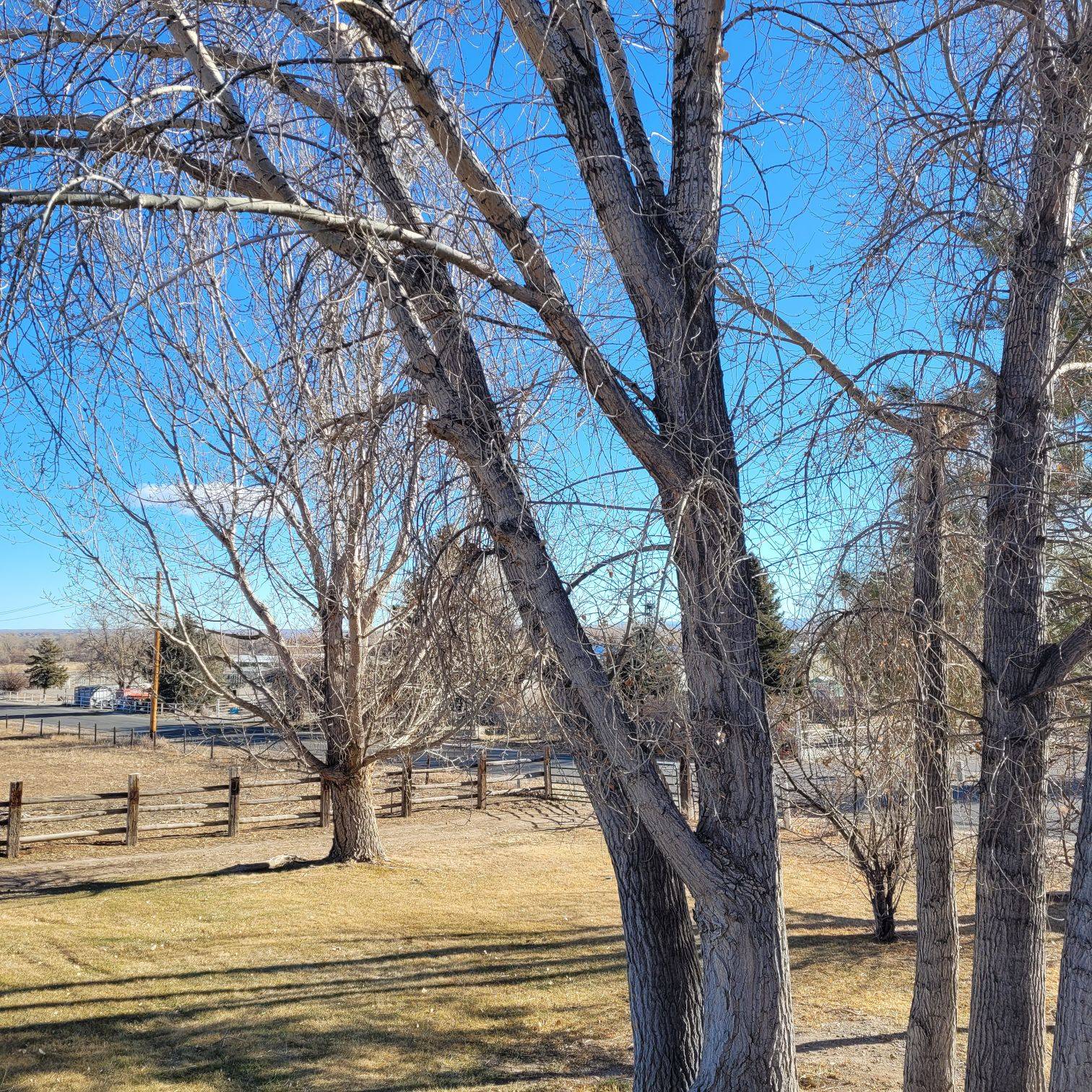
A tree with one or more huge limbs extending out from the trunk can alter its path as it falls, too, twisting and turning at random until it finds something expensive to damage or destroy.
If there are big branches that can alter the center of gravity when the trunk is cut, they need to be removed first.
The best method is an extendable limb saw since you don’t want to be standing adjacent to a big branch when it comes loose on top of a ladder.
Cut the branches away, then review the site again.
Measure Height Before You Cut a Tree

The next step is to measure the height of the tree.
You’re about to do a little junior high school math, the ratio and proportion kind.
With the sun casting a long shadow, either in the early morning, an hour or two after sunrise, or the late afternoon, an hour or two before sunset, stand and have someone measure the length of your shadow.
If you’re six feet tall and your shadow is nine feet, you have the basis to determine the tree’s height. Measure the tree’s shadow right away. For ease of description, let’s say the tree shadow is 90 feet, which means the tree is 60 feet high.
Multiply your height (6) times the tree shadow (90) and divide by your shadow (9). Your answer will be 60 feet.
Now, measure 60 feet in all possible directions the tree can fall. Add another 15 feet since some trees will “jump” off the trunk as they fall and bounce forward a few feet. Upper branches can break and fly a few feet farther than the rest of the tree, too.
Notch the Tree to Begin Cutting
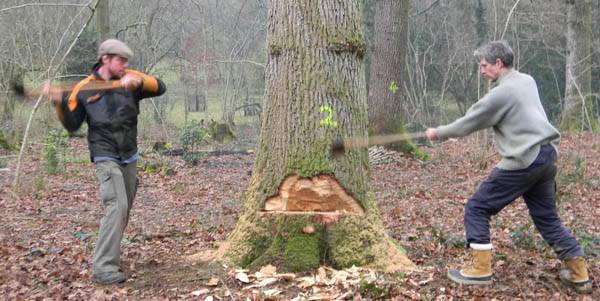
With all the measurements in place, cut a notch on the side of the tree in the direction you want it to fall. Cut a flat perpendicular to the ground lower cut and a 45-degree cut above it that connects just past the center of the tree.
Always check the condition of the tree trunk that you are going to cut by using a drill before you attempt to notch its trunk to avoid disaster.
Finish the Cut
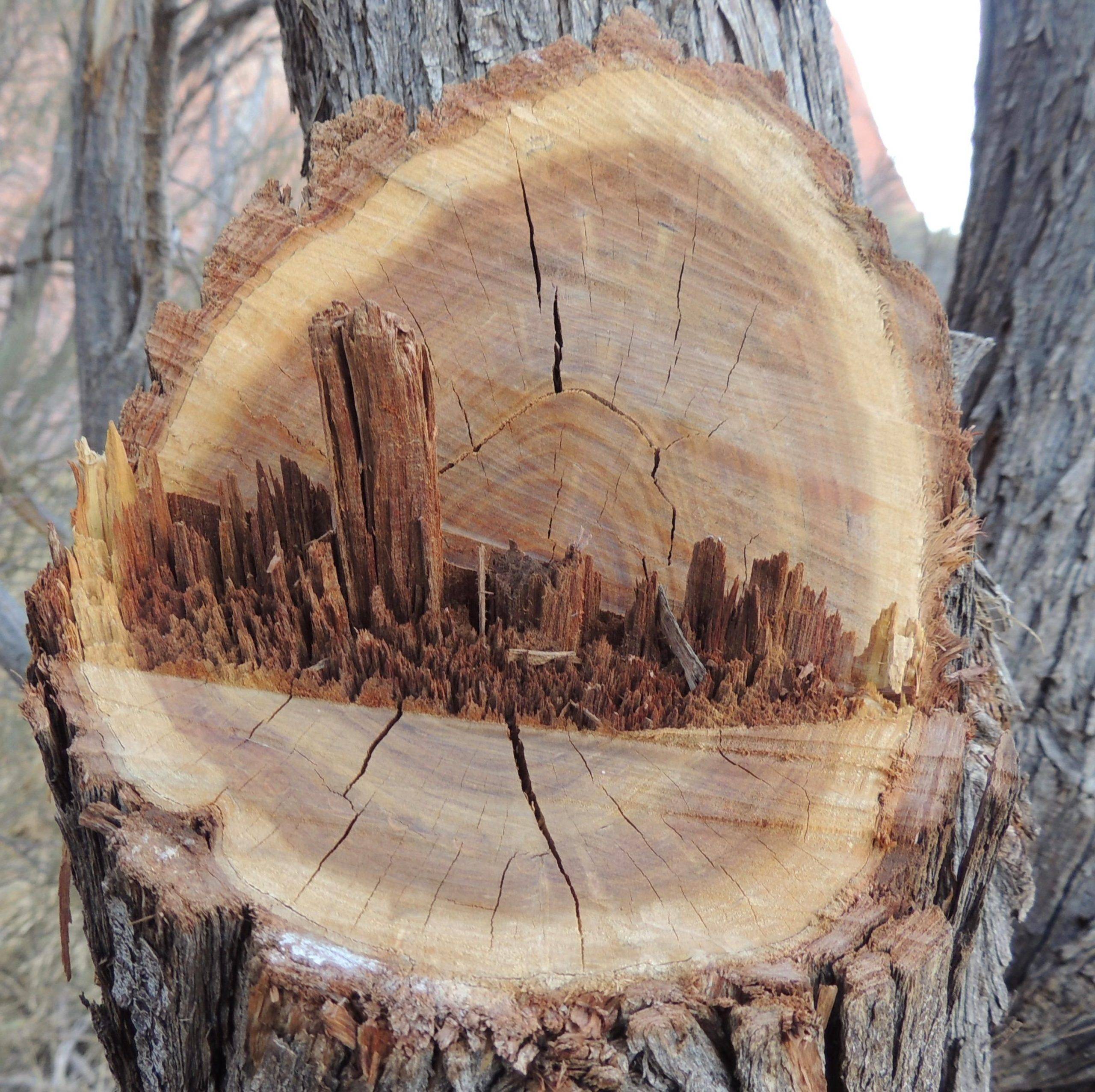
Cut the opposite side of the tree at a perpendicular to the ground angle at the same level as the lower cut on the other side.
Cut with your chainsaw, but watch the tree to see if it begins to move; when it does, pull your chainsaw and step back 15 feet at least.
Watch the Tree as It Comes Down
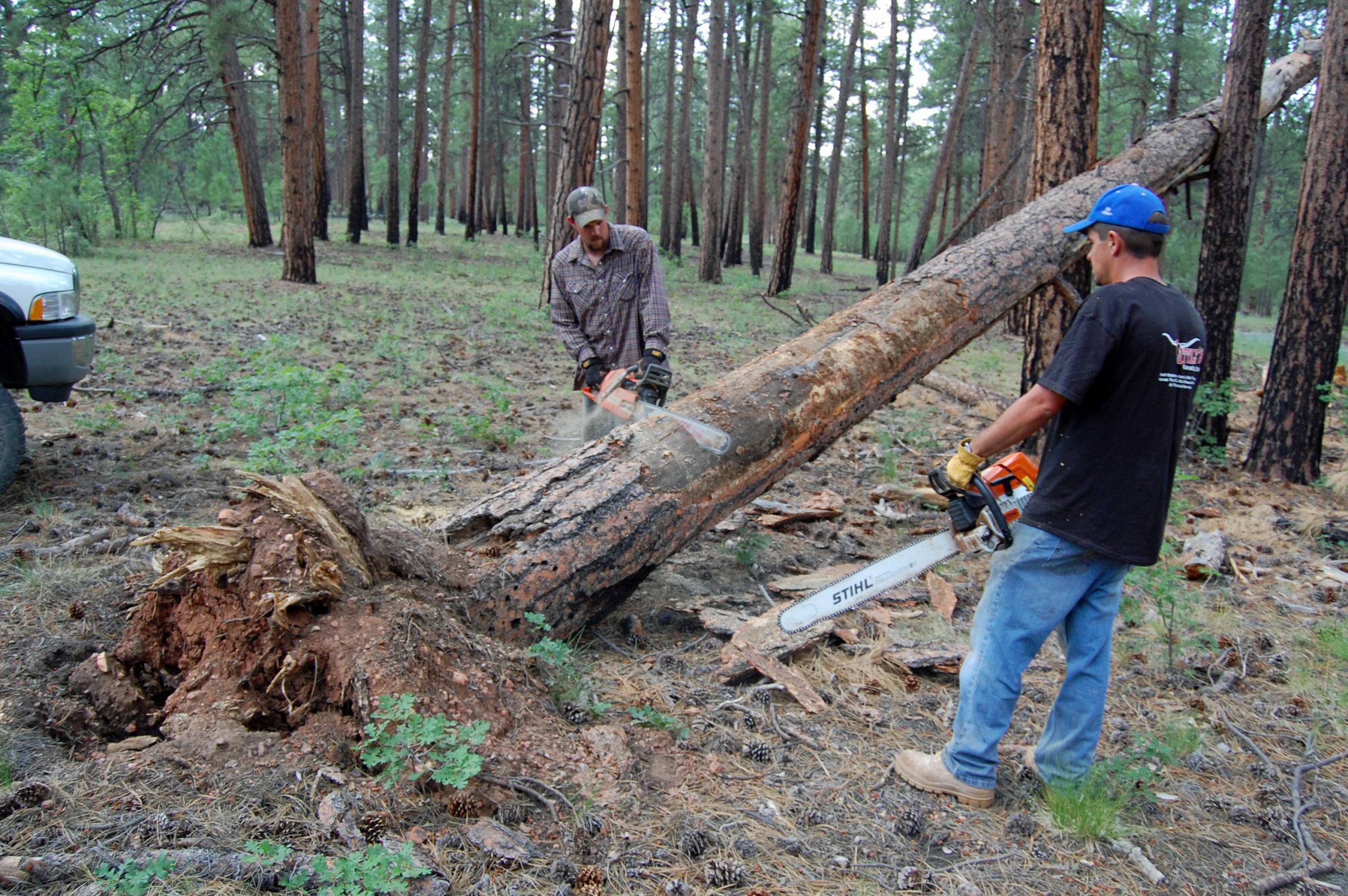
The tree should slowly accelerate as it falls. If it stalls, continue the cut, but be ready to jump away as the tree begins to fall again.
Trees, when falling, can have a predictable path. However, sometimes, a compromised tree could fall anywhere, so don’t risk your safety unless you know it’s safe to reapproach the tree.
Be Safe and Aware of the Conditions
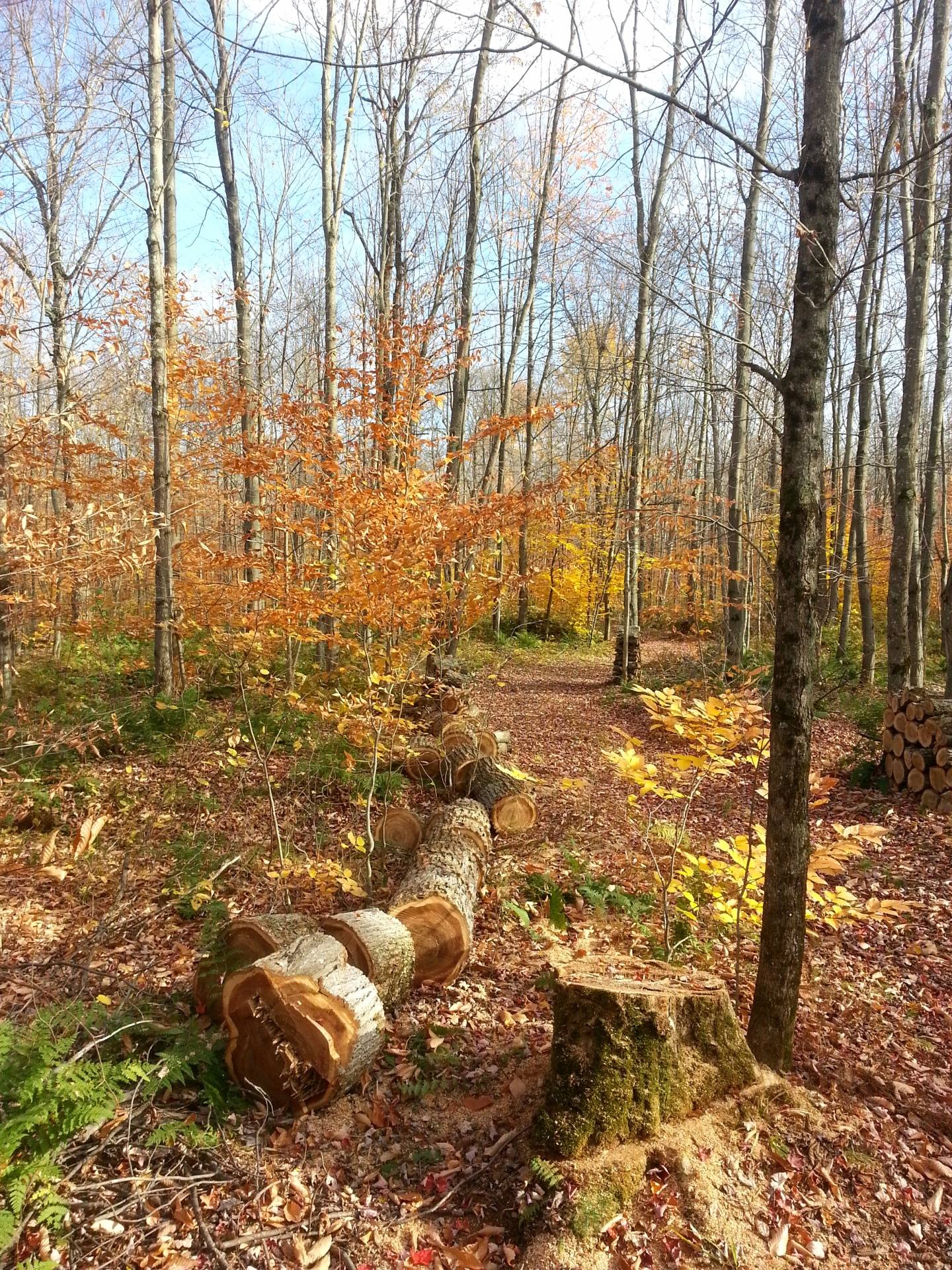
One final note: if the wind is blowing more than three miles per hour, wait for a calmer day.
That’s it, do it right, and you’ll earn your “Paul Bunyan Junior” badge.
Be safe, and don’t put yourself, others, or anyone’s property in harm’s way when the tree is coming down!



